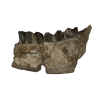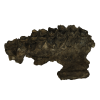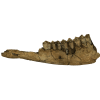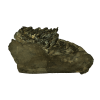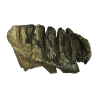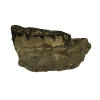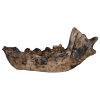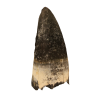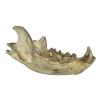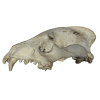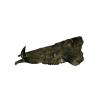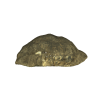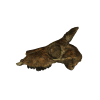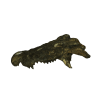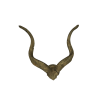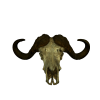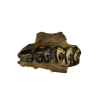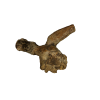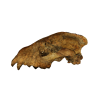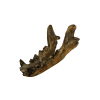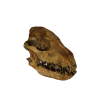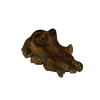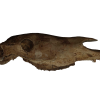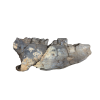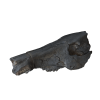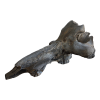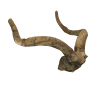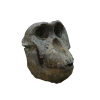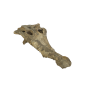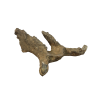This is a fossil skull of the Black Rhinoceros (Diceros praecox).Rhinos are rare elements in the Plio-Pleistocene faunas of the Turkana Basin. The black rhino, Diceros praecox which is virtually indistinguishable from the extant Diceros bicornis, made its first appearance at Lothagam in the Apak Member and at Kanapoi. It evolved into the extant species towards the later Pliocene. Ceratotherium simum, the white rhino, is the most common rhino during the Late Pliocene and Early Pleistocene faunas of East Africa.
This skull has the following upper dentition: (Right P3-M3, Left P2-M3).
The black rhino is a browser, feeding on leaves. Fossil rhinos are harder to distinguish on their dentition alone, but their skulls are diagnostic. The skulls of black rhinoceros being shorter than those of Ceratotherium. Only one species of Diceros occurs in sub-Saharan Africa today, and only five extant species of Rhinoceros are known world wide. They are all threatened.






